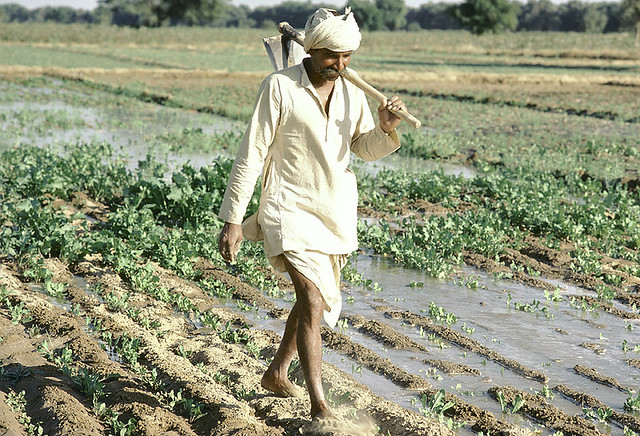Smart Water Management, Andhra Pradesh, India
Challenges:
World over, Water is becoming more and more a scarce and valuable resource and needs to be managed better. The key to developing policies to manage and conserve scarce water resources sustainably is real-time data as to its availability, use and wastage, which has been a challenge until recently. The State of Andhra Pradesh in India wanted one authoritative system that contains all water related information such as supply, demand, environmental factors etc. to provide decision support to policymakers.
Solution:
Water Resource Information System from Vassar Labs provides a solution to bring sensor data, mobile input data, mathematical model derived data, satellite data, web-based data and all other data relevant to water to one platform to bring near real time visibility to all the water related assets for a large state, county, district or block.
Drones equipped sensors were able to measure:
- Rainfall
- Ground Water
- Reservoirs – Major, Medium and Minor
- Soil Moisture
- Rivers and Streams
- Irrigation Canals
- Environmental factors like temperature, humidity, sunshine, wind speed etc.

Andhra Pradesh has 100+ major and medium reservoirs, 40,000+ minor reservoirs, about 1 million Water Conservation Structures to recharge Ground Water. Real time data is obtained from 1900+ Automatic Weather Stations, 1250+ Automatic Ground Water Level sensors, 900+ Soil Moisture sensors and Sensors on Canals and Rivers at strategic locations.
The sensor data is augmented with the data from Hydrology models, Satellite data and data derived from Satellite data like Evapotranspiration, Soil Moisture, Water Spread area to volume estimations for the reservoirs. The Water Resource Information System also gives visibility into Water Conservation Structures used to recharge Groundwater. Water Resources Information from sensors is augmented by the data derived from models, satellite data and crowd sourced data. This provides one system to policy makers to show all the water assets of the state of Andhra Pradesh.
Water management of each of the individual components in the overall framework is further supported by a system of sensors/satellite data and linked decision support software.
Las Vegas Valley Water Leak Management using IOT sensors
Challenges:
Cities are facing water shortages all over the world and need help identifying issues early to help avoid a catastrophic event. Water loss due to leaks, big and small, on service lines, waste water. For ratepayers, they can drive up the cost of water bills and in large pipelines, they can erupt into a major disaster. The Las Vegas Valley Water District’s (LVVWD) known water losses are due to failed small diameter service lines. To find leaks on small diameter service lines, the District employs leak detection devices that periodically listen for sounds or vibrations that maybe caused by water seeping from the system. To find leaks on large pipelines, the district manually surveys critical pipelines using sophisticated leak correlation equipment. Installed in 1960’s, the 30-inch water main supplies up to 7.5 million gallons of water per day to resorts, casinos and attractions. Las Vegas Valley Water District initially conducted some inspections of the pipe using a different technology and determined that several sections of the pipe were becoming degraded. They had to determine whether to replace the pipe before it really fails, or continue to wait until it fails and then replace it. This challenge is not just specific to Las Vegas Valley Water District – it is faced by water system operators each and every day.
Solution:
US telecommunications firm AT&T, technology company IBM and Mueller Water Products have collaborated to develop a solution which can help cities in water conservation. This solution was developed as a part of the Global City Teams Challenge organised by National Institute of Standards and Technology (NIST) and presented at NIST’s Tech Expo.
LVVWD deployed Mueller Water Products’ EchoShore®-TX permanent leak detection platform. The smart technology enabled LVVWD to better understand and manage the critical water supply pipeline and to reduce any potential water loss due to leakage. The monitoring platform combines proven acoustic leak detection technology with wireless connectivity and visual end-user dashboards to create a cost-effective monitoring solution. In Las Vegas, 13 permanent acoustic sensors are monitoring 3 miles of the aging pipeline installed under Las Vegas Boulevard, from Sunset to Flamingo Roads. (IOT News)

The technology allowed the LVVWD to think outside the box and monitor the pipe on a continuous basis to detect small leaks before they become larger, and then be able to schedule an act and make repairs as needed. In short, it allows LVVWD to extend the life of pipes significantly. The solution can now be installed permanently instead just a temporary solution in order to be continually proactive to find leaks.
The NIST water sustainability project incorporates AT&T wireless connectivity to collect, transmit and manage data from the EchoShore®-TX monitoring nodes. AT&T cellular wireless connectivity was selected as it’s secure, readily available and low cost for connecting Industrial Internet of Things like the sensor used in the EchoShore-TX system. AT&T is also helping Cities mobilise their worlds with state-of the-art communications for Industrial Internet of Things solutions like, smart metering, LED lighting, fleet management, renewable, energy and prepay energy. ( IOT News).
The implementation of this system by the LVVWD Corrosion control Systems Technician is explained in the following video: https://youtu.be/0zw9JJmSPnY



